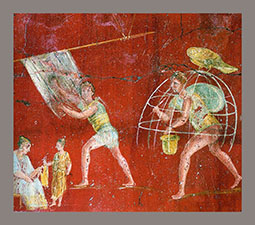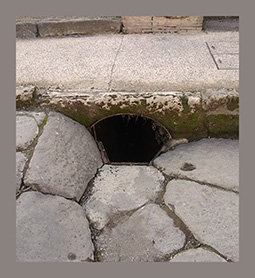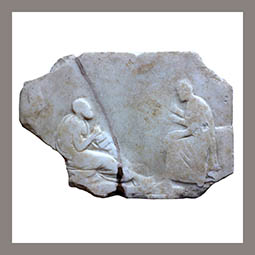Author: F. Coletti
Download article as .pdf: I tessuti d’area vesuviana del Museo Archeologico Regionale di Palermo. Indagini tecniche e analisi archeometriche
 The present research is part of an ambitious project conducted by Palermo University in collaboration with the Palermo Museum “Antonio Salinas”, focusing on the study and analysis of the artefacts donated to the Museum in the first half of the 19th century by the Borbone dynasty. This contribution aims to present the results of the analyses carried out on a series of organic artefacts identified as remains of carbonised textiles. Microscopic investigations allow for identifying the textile structures, the type of fibres and the characterisation of various stages of carbonisation of the textile materials. Interesting comparisons concerning the preservation states and the original function of the textile fragments have been established with the Vesuvian textile collections and the imprints of garments impressed on the surface of human plaster casts of Pompeii. The outcomes of this study contribute to an interdisciplinary project that aims, in addition to research, at the enhancement and display of these artefacts undertaken by the Palermo Museum concerning the Borbone donations.
The present research is part of an ambitious project conducted by Palermo University in collaboration with the Palermo Museum “Antonio Salinas”, focusing on the study and analysis of the artefacts donated to the Museum in the first half of the 19th century by the Borbone dynasty. This contribution aims to present the results of the analyses carried out on a series of organic artefacts identified as remains of carbonised textiles. Microscopic investigations allow for identifying the textile structures, the type of fibres and the characterisation of various stages of carbonisation of the textile materials. Interesting comparisons concerning the preservation states and the original function of the textile fragments have been established with the Vesuvian textile collections and the imprints of garments impressed on the surface of human plaster casts of Pompeii. The outcomes of this study contribute to an interdisciplinary project that aims, in addition to research, at the enhancement and display of these artefacts undertaken by the Palermo Museum concerning the Borbone donations.



